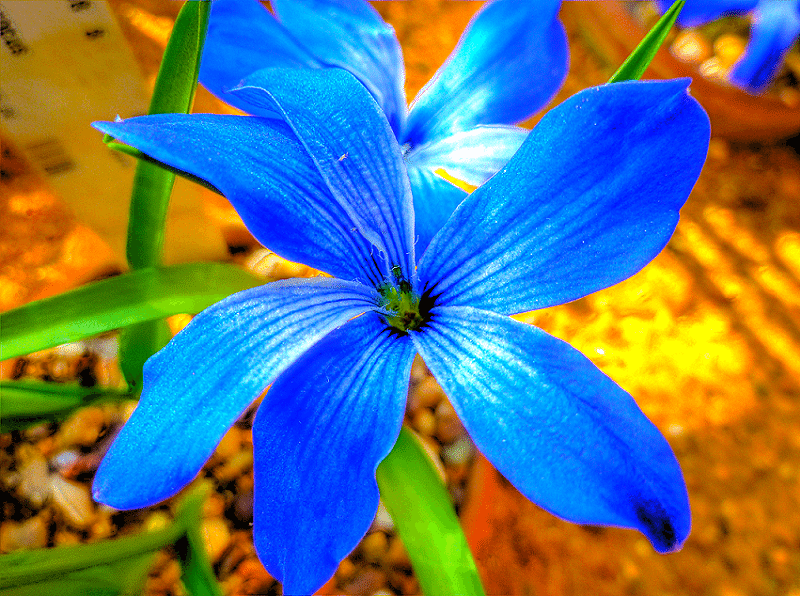Blue Chilean Crocus Facts
- Interestingly, despite the name, the incredibly beautiful Blue Chilean Crocus doesn’t actually qualify as a crocus at all. In point of fact, botanists actually classify this remarkable species as a member of an entirely different family of flowering plants. That has the complex scientific name of Tecophilaeaceae.
- Nevertheless, none can deny the delicate beauty of its blooms, regardless of its classification. Sadly, however, this same beauty consequently contributed to its near extinction in the wild. This terrible fate very nearly occurred, entirely due to extensive over collecting of the plant.
- Partially due to this over collecting, the great majority of scientists believed extinct it to be extinct n the wild. This belief held until its rediscovery in 2001. Overgrazing and general habitat loss also played a role in its near demise in the wild. Yet, only a few apparently remain in the wild.
- While naturally occurring individuals near extinction, the gorgeous Blue Chilean Crocus abounds in cultivation around the world. That’s because this beautiful plant has become very popular in numerous countries for landscaping and greenhouses. As a result, the IUCN has no listing for it.
Related Articles
Blue Chilean Crocus Physical Description
While not actually a crocus, the truly stunning Blue Chilean Crocus remains classified as a flowering perennial. In addition, this small plant produces stems that average 4 roughly in (10 cm) in height. Further, each of these develops 1-3 leaves that develop as relatively long and elongated. These average 4 in (10 cm) in length, and 0.4 in (1 cm) in width. The foliage displays a bright green color.
Yet the flowers themselves rank as the most noteworthy feature of the breathtaking Blue Chilean Crocus. These beautiful blooms grow in a trumpet shape and can appear as either pale blue, deep blue, or even purple. In the meantime, the fruit appears as a tiny, rounded capsule, and contains only a few, very small seeds. Moat unfortunately, these often fall on rock and never germinate.
- Kingdom: Plantae
- Phylum: Angiosperms
- Class: Monocots
- Order: Asparagales
- Family: Tecophilaeaceae
- Genus: Tecophileae
- Species: T. cyanocrocus
Blue Chilean Crocus Distribution, Habitat, and Ecology
Firstly, to the knowledge of researchers, the marvelous Blue Chilean Crocus only grow only in an extremely restricted range. That highly limited area only consists of the country of Chile, in South America. But even there, however, this stunningly beautiful flower currently now exists only in a few scattered locations.
Further, this very rare species also has very specific habitat requirement.s That holds true due to the fact that it only endemically inhabits a range restricted to altitudes ranging between 6,600 and 9,800 ft ( 2,000-3,000 m). To be precise, this range comprises slopes in the Andes Mountains having an extremely stony nature.
In its native habitat range, the magnificent Blue Chilean Crocus generally blooms between October and November. However, natural propagation of the plant remains quite sparse. This unfortunate circumstance occurs due to a combination of two factors. Those consist of the nature of the environment and the tiny seed count per plant.
However, in cultivation, horticulturists accomplish this comparatively easily, since there are no threats present. In that case, it’s managed via the corms the plant produces. But, in its native range, its primary threats include habitat loss and climate change. Finally, blooming typically requires about 5 years of growth.
Species Sharing Its Range
Check out our other articles on Madagascar’s Astounding Inhabitants, Pudu, Vietnamese Mossy Frog, Olive Sea Snake, Stalk-Eyed Fly, Sensational Spiders Around the World, Indian Vulture

